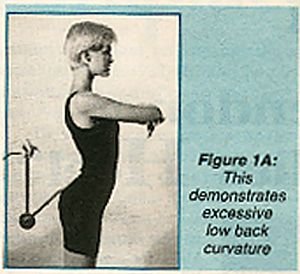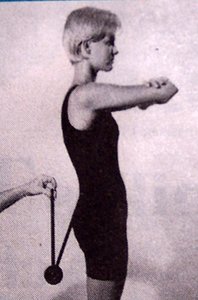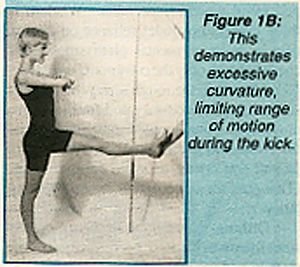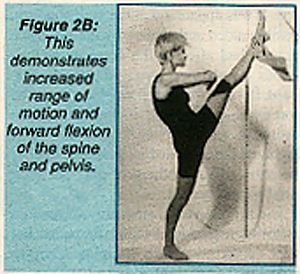His words still rang in my ears as I approached the center of the ring to start the third and final round of this championship fight: "You have to have higher kicks." My mind froze as I thought, "Higher kicks. I just can't kick any higher, can I?"
Just as the referee signaled to begin the final round I awoke. My nightmare was over. I remembered I no longer fight in competition, and that I'm a chiropractor, a team doctor for high school and semi-pro football, college wrestling, and an attending physician at Tae Kwon Do tournaments throughout California and Nevada. I have two daughters, both California state champions. The oldest, who is 16, took 3rd in her first attempt at the nationals last year. I no longer have to worry about kicking higher: what a relief.
Normally my dreams aren't so vivid, and I don't remember them past a couple of days, but later that day I was at Santino's Tae Kwan Do studio in Bakersfield watching a pretty tough match between two adult yellow belts, when studio Director Len Medina asked me, "Doc, what can be done to help beginning adults achieve 'higher kicks'? They've been stretching their hamstrings for months without very successful results."
The bells went off inside my head, and I told him, "Each and every person is different, but I'll try to cover the most successful approaches and techniques." The following is an attempt to cover the basics of achieving higher kicks and preventing injury while doing so.
For an adult getting into Tae Kwan Do for the first time or perhaps an athlete returning after several years of being off, there are a few steps to try to be sure of having the highest possible kick. First, check the ankles to see that they have retained the ability to dorsiflex at least 15 degrees. That means a person should be able to go into a full squat and keep the heels flat on the floor without losing balance. If you are unable to do this you should see a sports chiropractor to help regain this position.
The next step would be to rule out a hip pathology or any form of arthritis. This can be checked by lying flat on your stomach and having someone take your leg straight out to the side, knee locked with the toes pointing down. When the leg is all the way to the side, rotate the foot outward and bring the leg back to center. Pain or the inability for the leg to maintain the same length may be an indication of a hip problem which should be examined more thoroughly.
Getting past these two obstacles, the next thing is to make sure that both the hamstrings and the quadriceps have been stretched to their fullest extent. When, for example, the left leg is kicked up high, the hamstrings on the left leg are stretched tight while the quadriceps on the right are also stretched. Regular attendance at TKD workouts should help the student accomplish this within a few months.
The next step is one in which the most problems are found. It involves making sure that the low back has the maximum amount of forward bending possible. This involves checking for any fixations (decreased motion) that the student may have acquired due to trauma, repetitive injuries, or poor posture. These would decrease the ability of the lumbar spine to fully flex. This inability for the low back to fully flex while trying to kick is demonstrated in figures 1A and 2A.


Figure 2A: This demonstrates a more normal curve.
Without this flexion the pelvis is unable to rock backward and allow the attachment to the hamstring to rotate downward, giving the effect of longer hamstrings. For every degree of lumbar flexion that is lost (depending upon leg length), one to several inches is lost in the height of the kicking capability. Figures 1B and 2B demonstrate - 20 degrees difference in the lumbar curve causing a 26 inch difference in kicking height.


If students lose some range of motion in the low back and it is keeping them from fully flexing, they have lost height on their kicks and are in need of chiropractic adjustments to regain flexibility. Additionally, all kicks require strong abdominal muscles to create the necessary backward pull on the pelvis. This can be accomplished by doing modified situps or crunches daily.
The pelvis itself should rock in a sideways figure eight motion when a person walks. This same motion allows the pelvic ligaments to give in the direction necessary to allow a high kick. Fixations in this area could greatly reduce the functional range of motion, and cause a fighter to be more susceptible to a low back injury. Chiropractors are excellent at dealing with this problem.
Finally, if all these suggestions have been tried and your kicks still just aren't high enough, chances are scar tissue and fibrotic adhesions are the limiting factors. This may have built up over years of poor posture, or from microtrauma of daily living. These can be relieved by the procedure known as MUA (manipulation under anesthesia). MUA effectively decreases scar tissue, shears fibrotic adhesions, and is very successful at increasing range of motion. It's so successful in fact, that some martial arts actors have been known to undergo this procedure to maximize their potential in the shortest possible time (about one week).
In conclusion, if an adult who is serious about Tae Kwon Do competition and has fully stretched out his legs, checked ankles, hips, pelvis, low back, and had a chiropractor release any fixations, but his kicks still just aren't high enough, he should be assessed for scar tissue and should consider MUA. So if you think you just can't kick any higher, maybe, just maybe, you'll surprise yourself.
Guy Rogers, DC
Delano, California




